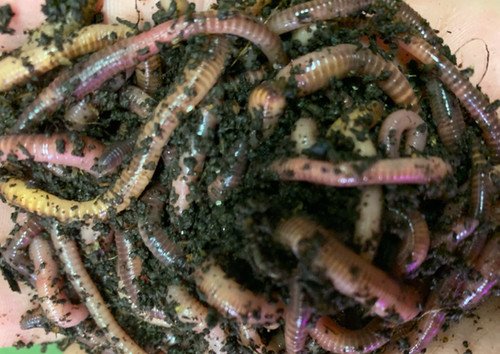
Now, you might be wondering why anyone would want to keep worms, let alone focus on a specific type like Eisenia hortensis. This species is known for its size and activity. It thrives in well-aerated, nutrient-rich conditions, making it perfect for both composting and as bait in fishing. So, how can we harness its potential, and is it feasible to raise them or study them in captivity? Let’s dig a little deeper.
What Makes Eisenia Hortensis Special?
Eisenia hortensis is not your average worm. They are larger and more robust compared to other species, which makes them ideal for composting and soil aeration. These worms can grow up to 4–5 inches long and are known for their vigorous movement. Their unique characteristics make them incredibly valuable in various applications.
One of the standout features of Eisenia hortensis is their ability to consume organic waste efficiently. They break down materials, turning kitchen scraps into nutrient-rich compost. This process not only helps reduce landfill waste but also enriches the soil, promoting plant growth. It’s like having a tiny ecosystem working tirelessly to create life-sustaining resources right in your backyard.
Moreover, these worms are also used in aquaculture and fishing bait. Their size and activity make them attractive to fish, which is another reason why they have become popular among anglers. So, whether you’re looking to compost or fish, Eisenia hortensis has got you covered!
Can Eisenia Hortensis Be Studied in Captivity?
Absolutely! Studying Eisenia hortensis in captivity opens a fascinating window into their behavior and environmental impact. Researchers often keep these worms in controlled settings to observe how they interact with their environment. This research can lead to a better understanding of soil health, waste reduction, and even climate change mitigation strategies.
For instance, scientists can analyze how different types of organic matter affect the growth and reproduction rates of these worms. By introducing various food sources like kitchen scraps or yard waste, they can see how efficiently Eisenia hortensis digests and transforms these materials. This valuable information could help in developing better composting techniques or systems.
You might also find it interesting that studying these worms can contribute to ecological education. Schools and community groups can engage students and the public through hands-on activities that illustrate the importance of sustainable practices. By learning about Eisenia hortensis, people can gain insights into their own environmental footprints.
Farming Eisenia Hortensis: The How-To Guide
Farming Eisenia hortensis is a rewarding venture, whether for personal use or commercial purposes. If you’re thinking about starting your own worm farm, here’s a simple guide to help you get started.
1. Choose the Right Container: You’ll need a bin that allows for drainage and aeration. A plastic container with holes in the lid works well. Make sure it’s large enough to accommodate your worm population.
2. Prepare the Bedding: Worms thrive in damp, organic bedding. Shredded newspaper, cardboard, and coconut coir are great options. Just make sure it’s moist but not soggy—think of it like a wrung-out sponge.
3. Add Your Worms: Introduce Eisenia hortensis to their new home. A good starting point is about 1,000 worms, which can process a significant amount of waste.
4. Feed Them: These worms love kitchen scraps like fruit and vegetable peels, coffee grounds, and crushed eggshells. Just avoid citrus, meat, and dairy products, as they can attract pests.
5. Monitor Conditions: Keep an eye on moisture levels, temperature, and pH balance. Eisenia hortensis prefers a temperature range of 55°F to 77°F (13°C to 25°C) and a pH around 6.0–7.5.
By following these steps, you can create a thriving worm farm that not only benefits your garden but also contributes to waste management efforts.
Potential Challenges in Captivity
While farming Eisenia hortensis can be an enriching experience, there are challenges to consider. First, maintaining the right environment is crucial. Too much moisture can lead to drowning, while too little can dry them out. Finding the sweet spot is key, and it may take some trial and error.
Another challenge involves pests. Fruit flies and other insects can become unwelcome guests in worm bins. To combat this, always use clean feed and store scraps properly. Keeping the environment clean and well-ventilated can also help deter pests.
Lastly, the worms’ health is paramount. If they show signs of distress—like not moving around much or dying—it may indicate poor living conditions. Regularly checking on their environment and feeding habits can help you catch problems before they escalate.
Why Farming Eisenia Hortensis Matters
You might be surprised to learn that farming Eisenia hortensis contributes significantly to environmental sustainability. Worm farming promotes composting, which reduces waste and minimizes the carbon footprint associated with traditional waste disposal. By recycling organic waste into compost, we can improve soil health, reduce the need for chemical fertilizers, and create a natural habitat for various plants.
Furthermore, the nutrients produced through worm castings enhance plant growth. Many gardeners swear by the benefits of using worm castings as a natural fertilizer. It’s like giving your plants a special boost without harmful chemicals!
This practice also aligns with the growing trend of sustainable living. As more people become aware of their environmental impact, turning to natural solutions like worm farming can help cultivate a greener future. By embracing Eisenia hortensis, we not only learn about sustainability but also contribute to a healthier planet.
In essence, Eisenia hortensis is much more than just a garden guest. This remarkable species holds potential for both study and farming, with benefits that extend far beyond our backyards. By understanding how to cultivate and study these worms, we can improve waste management, enhance soil health, and even inspire future generations to embrace sustainable practices.
So, whether you’re a curious student, an aspiring worm farmer, or just someone looking to make a positive impact, exploring Eisenia hortensis can open up a world of possibilities. Let’s dig deep into the wonders of these little creatures and discover how they can help us grow—and not just in the garden.
